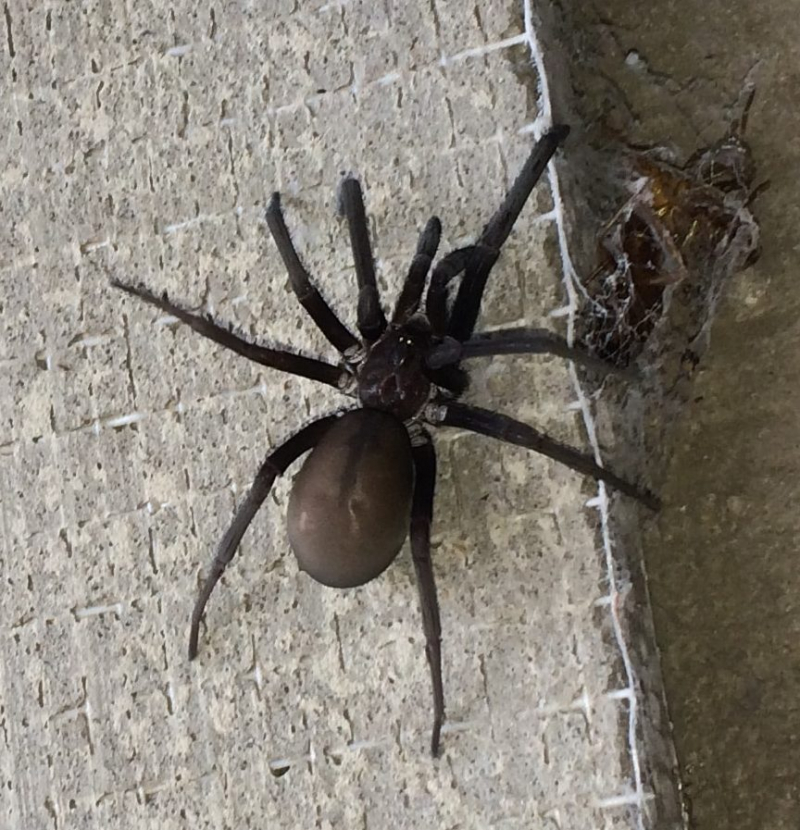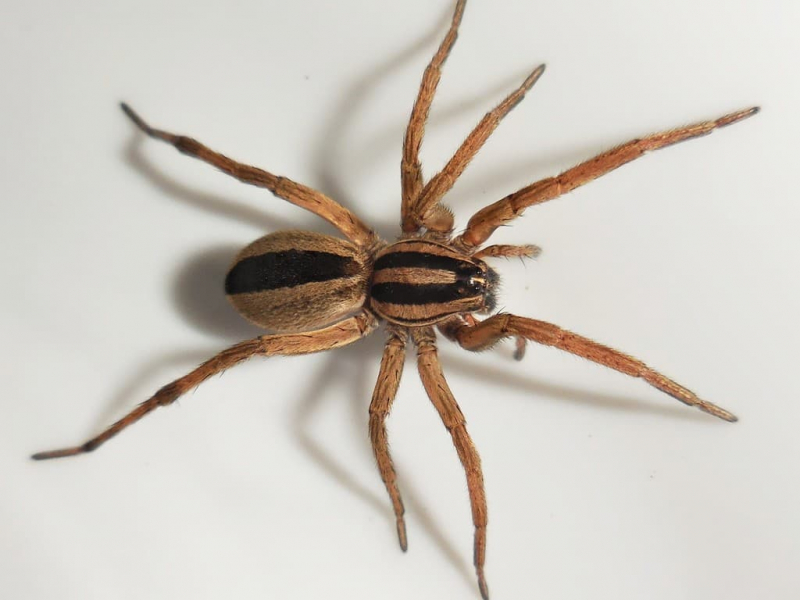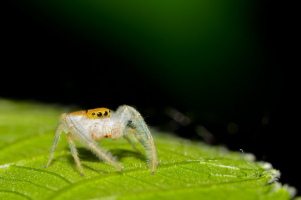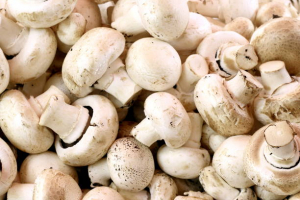Top 10 Most Common Types Of Spiders in Georgia
Georgia is home to many different plants and animals from black bears to big brown bats. It features both coastal plains and mountain ranges teeming with both ... read more...unique and common species. The State is also home to many kinds of spiders, from venomous black widows to invasive orb weavers. Here is a list of types of spiders in Georgia, let's find out!
-
The Brown Recluse is one of the most venomous spiders in Georgia. It possesses necrotic venom, which can occasionally result in death and cause vomiting, aches in the muscles, skin necrosis, and necrosis of the skin. Fortunately, it rarely bites people until cornered, and only very young children or those with compromised immune systems typically die from its bite.
The majority of brown recluses are between 6 and 20 millimeters long. They got their name because the color of their bodies normally ranges from light brown to dark brown or grey. They have a dark line that resembles a violin emerging from the cephalothorax. They knew by the titles fiddleback spider, brown fiddler, or violin spider because of their violin-shaped pattern. Brown recluses build asymmetrical webs but do not rely on their webs to catch prey. Instead, they leave their webs at night to actively hunt down insects.

Missouri Department of Conservation 
UC ANR -
The Southern House Spider is a member of the crevice weaver spider family Filistatidae. In addition to being widely dispersed throughout the southern United States, it is one of the most prevalent spiders in Georgia. It can be found as far south as Argentina outside of the US.
Due to their similar appearance, southern house spiders are frequently mistaken for the more dangerous brown recluse. However, southern house spiders lack the unique violin-shaped marking that distinguishes the brown recluse, so you can tell them apart. Males are approximately 8 to 12 millimeters long, and females are typically 12 to 18 millimeters long. Both sexes have a brown coloration, while females have a darker appearance than males and males have longer legs. Female southern house spiders construct non-sticky silk radial webs in order to capture food. They construct their webs to entangle prey long enough for the females to deliver a killing bite.

Spider Identifications 
Wikidata -
Joro Spiders, also known as East Asian Joro spiders, are invasive orb weaver spiders in the genus Trichonephila. These spiders are native to a number of East Asian nations, including China, Taiwan, Japan, Korea, and South Korea, yet you can also locate them in South Carolina and Georgia.
Male Joro spiders are 7 to 10 millimeters long, while females are between 17 and 25 millimeters long. They feature a red spot close to the back of their abdomens, along with yellow and dark blue stripes. Joro spiders produce far stronger silk than the majority of other spiders do. Their webs also differ from the webs of other orb weavers in appearance, with an uneven layer behind and in front of the central orb. They rarely show aggression toward people, yet their bite is still fairly severe.

UGA Today 
Alabama Cooperative Extension System -
The Southeastern Wandering Spider is a member of the wandering spider family Ctenidae. These spiders are widespread throughout the southern United States, including Georgia.
The size range of Southeastern wandering spiders is considerable, ranging from 5 to 40 millimeters. Due to their resemblance to wolf spiders, people frequently mistake them for wolf spiders. Their lengthy, multiple-jointed legs curve upward. They have a bright stripe down the middle of their carapaces and abdomens, and the majority of their bodies and legs are pale orange or tan with dark mottling. Instead of making webs, Southeastern wandering spiders actively engage in ambush hunting of their prey. They snooze in earth and plant-based burrows when not out hunting. Despite being toxic, their bite is not thought to have any serious medical effects.

Firdaus Khaled/Shutterstock.com 
iNaturalist -
The Twin-Flagged Jumping Spider (Anasaitis Canosa), is a small jumping spider in the family Salticidae. These spiders can be found not just in Georgia but also in states bordering the Gulf of Mexico. The majority of specimens are just slightly larger than males, averaging between 5 and 6 millimeters in length on average. Their two flag-shaped patterns on the underside of their cephalothorax give them their name. They have sparkling scales on their abdomens and cephalothorax that range in color from white to green to pink, as is typical of other Anasaitis species. Their carapaces, meanwhile, are primarily black with two white spots.
Twin-flagged jumping spiders use their quickness and sharp vision to capture prey. When hunting ants, they will directly face an ant and then leap onto their target to puncture its head or thorax with their chelicerae.

iNaturalist 
iNaturalist -
The White-Banded Fishing Spider (Dolomedes albinos), belongs to the nursery web spider family Pisauridae. These spiders are most frequently observed in Georgia close to streams, ponds, or other bodies of water. White-banded fishing spider females can grow to a maximum length of 23 millimeters. Males, meanwhile, have a maximum growth size of 18 millimeters. They come in a range of colors, although the majority of specimens have black patterns and seem brown or mossy green. The white band that runs over the area behind their eyes, around their jaws, and occasionally even around their entire carapace is where they get their name.
Along with insects, white-banded fishing spiders also hunt for tiny vertebrates. They have the ability to run over the water's surface and dive beneath it to grab small fish and tadpoles. Despite their size, their bite is not thought to be very dangerous.

Spider Identifications 
iStock.com/Brett_Hondow -
The Ravine Trapdoor Spider (Cycloscosmia truncate), is one of the rarest, most unique-looking spiders in Georgia. As suggested by its name, it frequently opts to construct its burrow in ravines. It belongs to the genus Cyclocosmia, which means "adorned with a circle" in Greek.
The disk of a female ravine trapdoor spider is about 16 millimeters broad and around 28 millimeters long. Their unique disk-shaped abdomen is referenced in their scientific name. Their disks are made up of a circle of grooves on the exterior that joins to form an asymmetrical shape in the center. The disk is light grey, the remainder of their body a glossy light or dark brown. Ravine trapdoor spiders defend themselves from predators by using the disk on their abdomens to block their prey. Similarly, they use sit-and-wait tactics to prey on insects that venture too close to their burrows.

Spider Identifications 
The Biologist Apprentice -
The Spiny-Back Orb Weaver is a member of the orb weaver family Araneidae. Its shell-like abdomen and conspicuous spikes make it one of Georgia's most distinctive orb weaver spiders. It can be found all across North and South America, as well as in some regions of Central Asia.
Male spiny-backed orb weavers are 2-3 millimeters long, compared to 5 to 9 millimeters for females. Additionally, only the females have the species' identifying six spines along the abdomen. Females with white upper abdomens typically have red or black spines, though there are other color variations. Males often have grey abdomens with white markings and many stubby projections in place of spines. Spiny-backed orb weavers like to build their webs in lightly wooded areas in regions with warm, wet climates. They prey on many garden pests and their bite poses little threat to humans.

South Carolina Public Radio 
iStock.com/Weber -
American Green Crab Spiders belong to the crab spider family Thomisidae. These spiders are widespread throughout the southeastern United States, including Georgia. Due to its bright green color and propensity to walk sideways like a crab, the American green crab spider earned its common name. Its bluish hue enables it to blend in with grasses and flowers, enabling it to ambush victims and evade predators.
The majority of specimens have unusually extended front legs that enable them to grip prey, and most are between 3 and 7 millimeters in length. Although they have an almost uniform green appearance, they have a tiny red line encircling the front of their abdomens. American green crab spiders hunt by keeping an eye out for insects that are coming to flowers and plants to drink nectar or collect pollen. Due to their small size, their bite is not considered medically significant and poses little threat to humans.

Wikimedia Commons 
DeviantArt -
The Dotted Wolf Spider (Rabidosa punctulate), often gets mistaken for its cousin, the rabid wolf spider. Both of these spiders are found in Georgia and are members of the Lycosidae family. Nevertheless, the dotted wolf spider has a number of distinctive traits.
They can be identified by the distinguishing spots on the underside of their abdomens. They have a distinct brown line down the middle of their abdomens in addition to the spots. Male dotted wolf spiders are about 13 millimeters long, while females are about 15 millimeters long. Female spotted wolf spiders carry their eggs on their spinnerets, just like other wolf spiders do. Instead of creating webs to trap prey, they actively hunt, outpacing their victim with their speed and strength. Despite their size, people are not thought to be at risk from their bite.

iNaturalist 
MDC Teacher Portal































